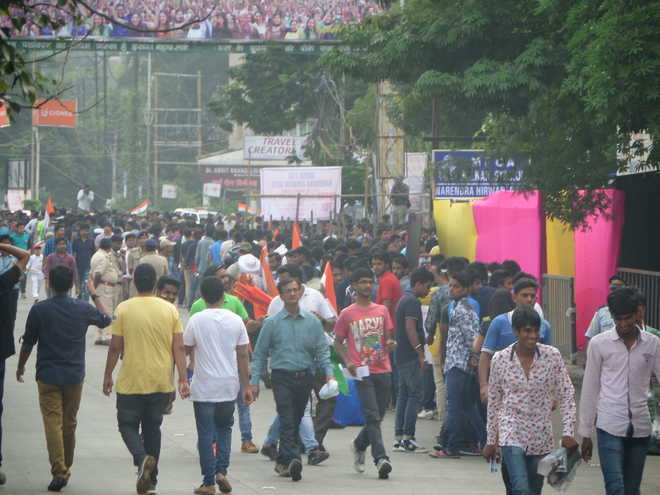Rohit Mahajan
Tribune News Service
indore, october 8
There was a time when Hindi commentary didn’t exist in cricket. Cricket, a sport of the royalty, was directed by All India Radio at only those who understood English, right to the 1970s. Were those who knew only the national language, or the regional languages, thought to be irrelevant as consumers and fans of cricket? That seems to be the case.
There was a policy change in the late 1960s, but Hindi made its Test debut only in the 1972-73 season when England visited. Over 25 years after India became free and the British left our shores, the grip of English on the cricket commentary was loosened. One Indore man, Sushil Doshi, then only 24, was among Hindi commentary’s pioneers. The commentary box at the Holkar Ground is named after Doshi, and he received the Padma Shri this year.
Indore is considered a sort of bastion of Hindi. The local writers pride themselves on the ‘shudhh uchcharan’ — accurate pronunciation — prevalent in their city. “That’s the reason so many TV journalists in the big channels are from Indore,” says a local reporter.
Doshi isn’t happy with the way Hindi commentary is going. “You can’t bend the rules of the grammar of English,” says Doshi. “So how can a commentator ignore the rules of Hindi?” He’s also unhappy that poetry, metaphor have disappeared from the Hindi commentary — he’s sad that the beauty of word and phrase is gone. “Everywhere in the world — Spain, China, France, Pakistan — people take pride in their own language,” says Doshi. “We, however, take pride in not knowing our own languages.”
Rush time
There could be up to 100 sports journalists in Indore. That’s a massive number for a city which see little international sporting action. But Indore is the economic powerhouse of Madhya Pradesh, the most populous city of the state. A large number of newspapers publish from the city, and thus the large number of sports journalists. They all wish to witness the first-ever Test played in their city, but the space in the press box is limited. This causes friction between the press and the organisers. “I’d glad Test cricket has come here, but it’s led to trouble for us, because there have been ugly words spoken after we refused accreditation to some reporters,” says a member of the Madhya Pradesh Cricket Association’s media team.
Happy stands
There’s happiness in the stands, however. Up to 18,000 people were at the ground today. They are delighted that Indore is hosting a Test match, finally. “It’s wonderful that we’ve got a Test match here,” says Rahul Kalra, a lawyer. He and his friend Rahul Bairagi came in the second session, when they heard that Kohli was batting. But most fans got in early, some starting to queue up up to 90 minutes before the start. They came carrying the national flag, many got their faces painted white-saffron-green. When the national anthem of India was played before the start of play, many in the stands joined in towards the end, at “Jai Hey”. The national anthems before the Tests is an innovation introduced by BCCI this series because it drives feelings of nationalism. That’s true — as we all shout the final “Jai Hey”, we believe that we’re the greatest patriots ever.
Unlock Exclusive Insights with The Tribune Premium
Take your experience further with Premium access.
Thought-provoking Opinions, Expert Analysis, In-depth Insights and other Member Only Benefits
Already a Member? Sign In Now










